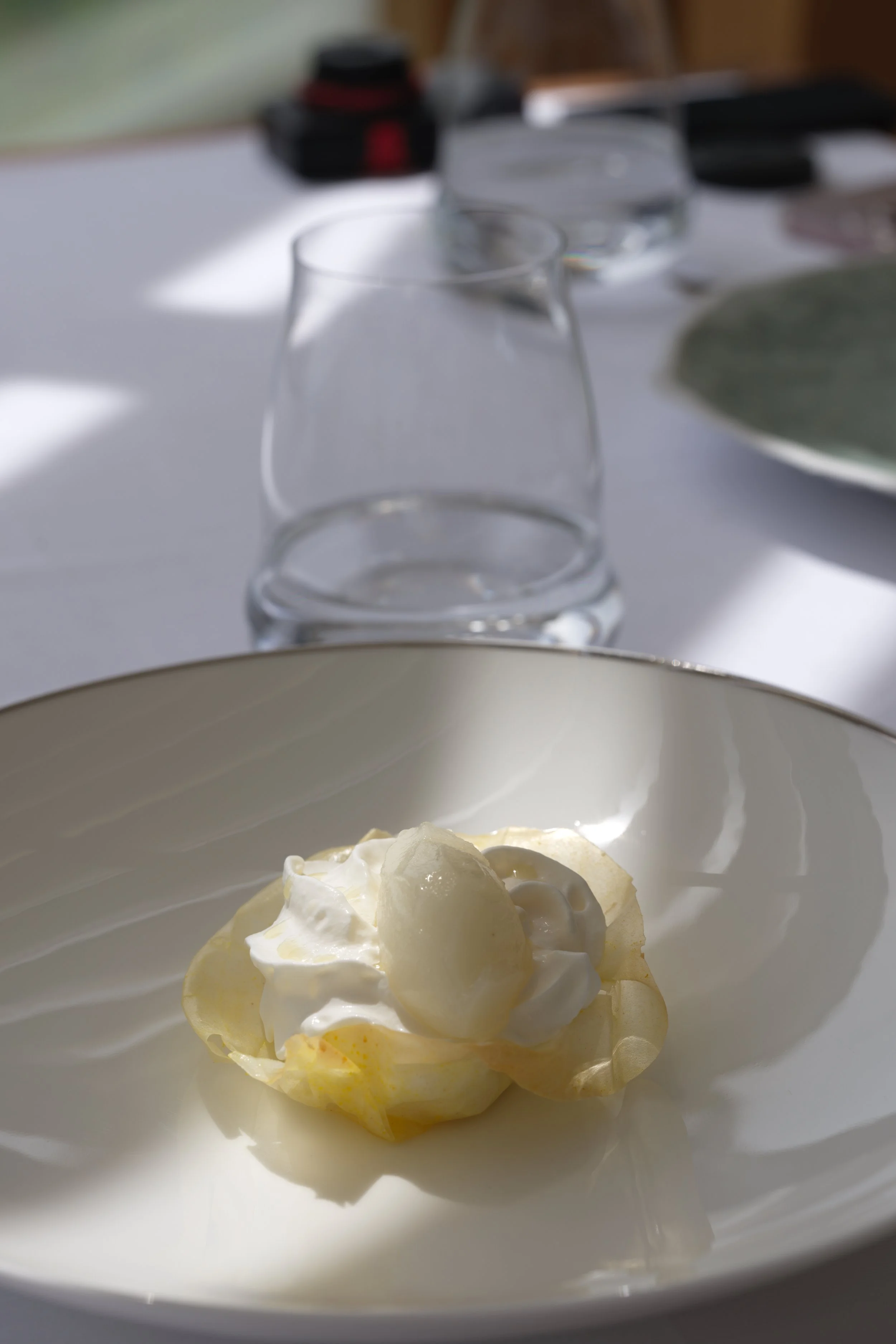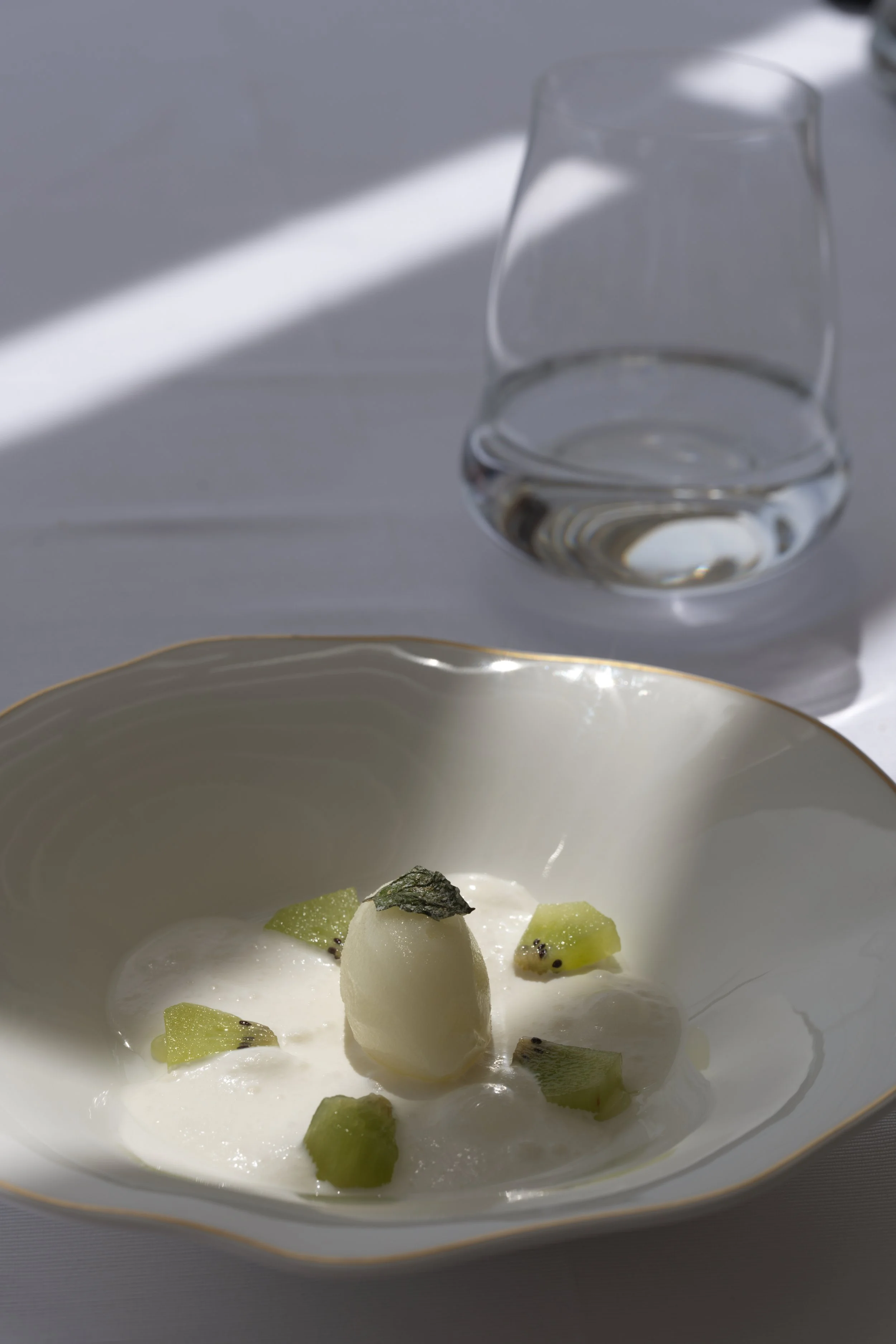Quattro Passi
The journey to Quattro Passi is akin to an adventure. Departing from the bustling heart of Sorrento, one embarks on a taxi ride southward, traversing mountains along narrow roads that barely accommodate a single vehicle, turning left and right until, after an hour, the destination is reached—a restaurant nestled within coastal dwellings on the other side of the mountain.
Quattro Passi, meaning "Four Steps to the Sea," is a newly minted three-Michelin-starred restaurant in Southern Italy, with a legacy spanning three generations. The round-trip fare could fund a flight to another country, yet the leisurely pace and absence of urgency make the journey feel like a casual detour to bask in the sun by the deserted shore, with a fine-dining experience as a pleasant aside rather than the sole purpose.
The restaurant's layout includes a ground floor for lounging and kitchens, a mezzanine level with a petite garden, and the main dining area on the second floor. Below ground lies a dilapidated castle-style wine cellar housing thousands of vintages, rumored to boast an exceptional collection. The ceiling, designed akin to shutters, allows sunlight to filter through on clear days, casting stripes of light onto the tables, complementing the pristine crockery and minimalist dishes.
On sunny days, the entire wall of floor-to-ceiling windows retracts, inviting sea breezes into the restaurant. Diners sport sunglasses at tables aligned facing the sea, with the vast expanse of blue merging seamlessly with the horizon. On one side lies the azure sea, while the other is adorned with verdant hills and winding roads descending.
Dining here feels like a vacation, dispelling any stringent expectations about the food. In this setting, the meal becomes an added pleasure.
Two menus are offered: a classic selection titled "Best of," featuring the restaurant's most iconic dishes since its inception, and a seasonal menu, both priced around €300. For a first visit, the classic set was chosen, accompanied by a succession of lemon-infused cocktails, befitting the Lemon Town. The server attending the table, though Spanish, had previously worked at Wolfgang in China, fostering a sense of familiarity.
The pre-meal snacks are varied and voyage-themed:
- Bread is presented in custom wooden containers, with cheese crackers shaped like sails and slender breadsticks resembling masts.
- Another peculiar vessel resembles a cliffside cave, adorned with seaweed.
- Spheres arrive in wax-sealed packages, evoking treasures discovered at sea.
Five appetizers introduce simple Italian flavors, such as tomato and anchovy balls and cheese and ham tartare.
The first course, also featured on the Michelin Guide's cover for the restaurant, is Squid. A clever choice for a seaside locale, it presents a straightforward composition that often elevates dishes to fame. At its core rests a layer of lobster tartare, enveloped by petals of raw squid, topped with a generous spoonful of caviar, all set in a pool of green apple and lemon sauce. It emphasizes freshness and lightness, bordering on subtle flavors that highlight the ingredients' natural taste.
The second course, Red Seabream follows, a standout dish. Two crispy waffle potato slices encase a thick, pan-fried slab of seabream. The fish is of superior quality—tender, flavor-packed, and devoid of any fishy taste, resembling cod in texture but more cohesive without the layered feel. A bowl filled with a rich blend of butter, cream, olive oil, and rosemary serves as a dip for the fried fish, leaving a lingering, exquisite taste reminiscent of a luxurious version of McDonald's Filet-O-Fish.
Two mains follow: linguine with zucchini and basil, and gnocco (dumplings) paired with lamb shoulder and tomato mozzarella. Both are unremarkable.
The seafood main course is predictably Sea Bass, wrapped in vegetable leaves and served with white wine butter sauce. The fish is of high quality, seasoned with rustic simplicity.
The meat main, Veal Fillet, is tender and served with red wine sauce, satisfactory but not extraordinary.
Desserts commence with a Kiwi Sorbet, followed by a variety of sweets personally portioned out by the waiter, culminating in a cinnamon puff pastry and chocolate spheres seemingly embedded in stone.
The restaurant excels in non-alcoholic beverages; a brief description of desired flavors results in a perfectly tailored lemon drink.
It's hard to envision patrons undertaking such a journey solely for a meal on the remote side of the bustling coast, explaining the low occupancy rate of around 30-40% for a three-Michelin-star establishment. Yet, the arduous path to dine here truly feels like part of the journey. Perhaps the Michelin inspectors visited on a perfect afternoon, donning sunglasses and hats, leisurely enjoying their meal with the sea as their backdrop, forgiving any minor shortcomings and deciding to elevate the restaurant to a three-star status. After all, in this place, food is but an additional delight to the overall experience.


